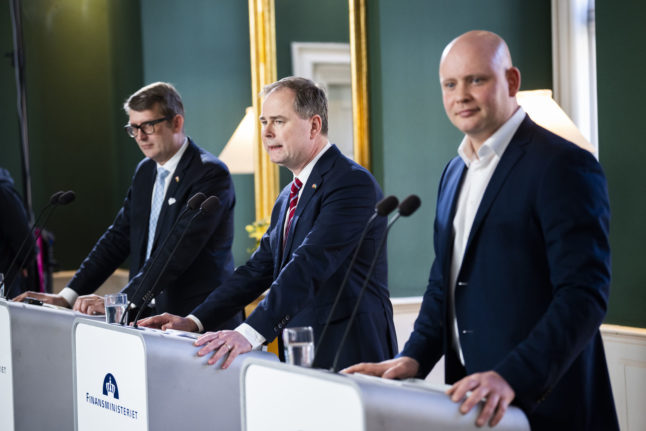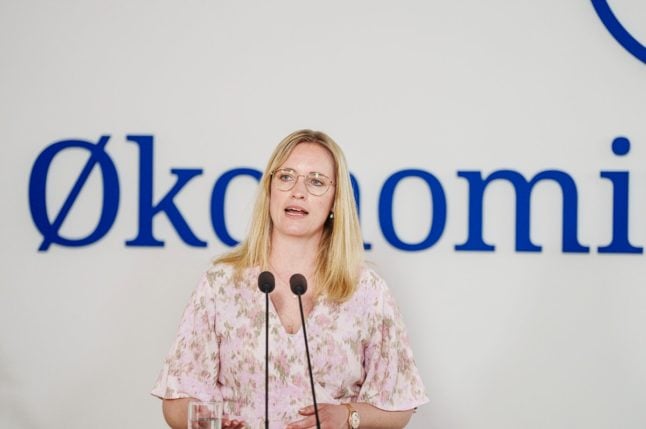Danish budgets are usually tabled and eventually adopted during the autumn, but last year’s election disrupted the normal timetable.
The proposed budget, given the title “A Responsible Way Forward” (En ansvarlig vej frem) was presented by ministers from the three coalition parties on Thursday: Finance Minister Nicolai Wammen, acting Defence Minister Troels Lund Poulsen and Culture Minister Jakob Engel-Schmidt.
A cautious economic approach to spending is needed given global circumstances including the war in Ukraine, inflation and last year’s energy crisis, Wammen said.
“Even though a lot of things look good when we look at the Danish economy, that doesn’t change where we are. Uncertain times,” he said.
Engel-Schmidt added that some might describe the proposed budget as “boring”, given that it “doesn’t bring a shower of presents”.
Key points from the proposed budget are outlined below. The proposal will go into negotiations with other parties in parliament before being voted through in its final form.
Inflation assistance to lower income groups
Last year saw the highest inflation rate for 40 years in Denmark, and the effects will still be felt in 2023 even if the inflation percentages themselves are less severe.
Although the government wants to “step on the brakes”, it has still set aside 2.4 billion kroner for financial assistance to people vulnerable to rising prices.
Some 1.1 billion kroner will be spent on 5,000 kroner “cheques” for elderly persons who receive social welfare. People who have high medicine costs and students who receive subsidies because they must provide for others, such as single parents (SU-forsørgertillæg) are also among groups to be assisted with the inflation spending.
READ ALSO: Danish government agrees inflation package for vulnerable families
‘Acute plan’ for hospitals
An agreement with regional health authorities on an “acute” spending plan to address the most serious challenges faced by the health services has already been agreed, providing 2 billion kroner by the end of 2024.
The agreement was announced by the government along with regional and municipal officials in February.
READ ALSO: What exactly is wrong with the Danish health system?
‘Lower than ever’ reserve fund
A so-called “negotiation reserve” (forhandlingsreserve), a pool of money in the budget that can be allocated at a later date based on agreements between parties, has been significantly cut to 200 million kroner.
A 2023 budget proposal from August last year, which was not adopted due to the election, had the fund at 600 million kroner. The reserve has been as high as 1.5 billion kroner in the past, according to broadcaster DR’s report on Thursday’s proposal.
The previous, single-party Social Democratic government was reported to favour mental health services and the elderly as areas which could benefit from the fund in 2023.
The lower amount is partly due to the shorter timescale of this year’s budget. The 2024 budget will be proposed and passed in late 2023 under the regular timetable.
“There are still things we can prioritise but we are asking you to take responsibility to get Denmark through while inflation is still a major challenge,” Wammen said.
Spending on courts system
Some 32.2 million kroner has been put aside to specifically target a reduction in waiting times for court dates, DR writes. The money is part of a larger amount, 185 million kroner, to be spent on the courts.
Denmark’s courts system has in recent years seen a rising number of criminal cases and lengthy processing times.
Broadband internet to get boost in rural spending
The “broadband fund” or bredbåndspulje will get an additional 100 million kroner to improve coverage in areas that still have patchy connection.
Another 100 million kroner will go into the landsbypulje or “Village Fund”, giving rural municipalities funding for demolition or renovation of deteriorated buildings.
Ukraine
A majority in parliament has already voted in favour of a seven-billion kroner fund in 2023 to help Ukraine defend itself against the Russian invasion.
The fund will be spent on Danish military, civilian and commercial assistance to Ukraine.
Part of the spending is funded by Denmark’s international development budget, while over 5 billion comes from spending an increased portion of the national GDP on the 2023 budget.
READ ALSO: Denmark announces seven-billion kroner Ukraine fund




 Please whitelist us to continue reading.
Please whitelist us to continue reading.
Member comments